
Nowruz is a Persian celebration that marks the beginning of the new year in Iran and other countries in the region, such as Afghanistan, Tajikistan, and Uzbekistan. The word “Nowruz” translates to “new day” in Persian, and the celebration usually takes place on the first day of spring, which falls around March 21st.
Contents
Definition and history of Nowruz
Nowruz, which means “new day” in Persian, is the traditional Iranian festival of spring and the Persian New Year. The holiday falls on the vernal equinox, usually on March 20th or 21st, and marks the beginning of the new year in the Persian calendar.

The origins of Nowruz can be traced back to ancient Persia, where it was celebrated as a pagan festival. The holiday was later adopted by Zoroastrians, who considered it a religious occasion. According to Zoroastrian tradition, the god Ahura Mazda created the universe on the first day of spring, and Nowruz was a celebration of this creation.
Over time, Nowruz became a secular holiday and was celebrated by people of various religions and ethnicities through out the region. Today, it is an important holiday in Iran, Afghanistan, Tajikistan, Uzbekistan, Azerbaijan, and other countries with significant Persian influence.
The festivities of Nowruz typically last for 13 days and are marked by a series of customs and traditions. Prior to the holiday, families undertake a thorough spring cleaning of their homes, known as “khaneh tekani,” to prepare for the new year. They also buy new clothes and decorate their homes with flowers and other festive items.
On the day of Nowruz, families gather for a special meal, known as “Haft Sin,” which includes seven symbolic items starting with the letter “S” in Persian. These items include “sabzeh” (sprouts), “samanu” (sweet pudding), “senjed” (dried fruit), “seer” (garlic), “sib” (apple), “somagh” (sumac), and “serkeh” (vinegar). Other items, such as a mirror and candles, are also included in the Haft Sin.
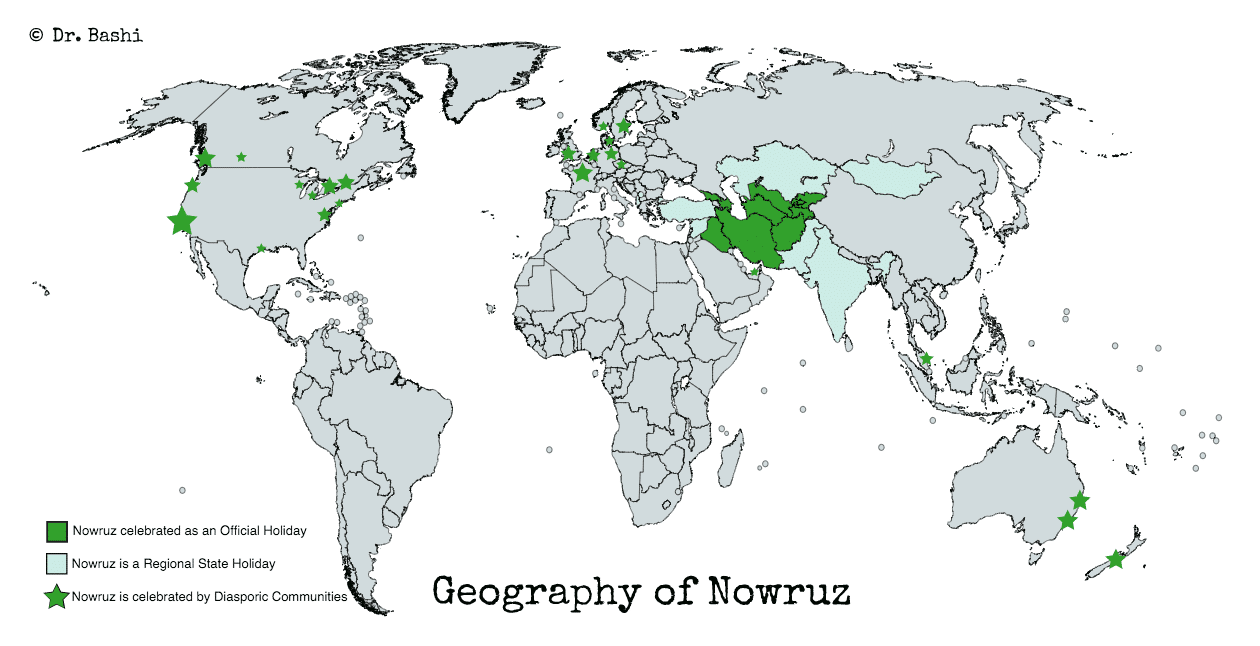
In addition to the Haft Sin, other Nowruz traditions include exchanging gifts, visiting relatives and friends, and participating in community events and festivities. The holiday serves as an important time for renewal, reflection, and reconnection with loved ones and one’s cultural heritage.
Importance of Nowruz in participating countries
Nowruz is a very important holiday in the countries where it is celebrated, as it symbolizes new beginnings, hope, and renewal. The holiday is not only a time to celebrate the coming of spring and the start of a new year, but also an opportunity for people to connect with their families, friends, and communities.
In Iran, for example, Nowruz is considered the most important holiday of the year, and its preparation and celebration are woven into the fabric of Iranian culture. The holiday is a time for Iranians to reflect on their past and plan for the future, while also renewing their commitment to their cultural and national identity. The festivities of Nowruz typically last for two weeks, during which people take time off work and school to visit family and friends, attend concerts and cultural events, and participate in outdoor activities such as picnics and hiking.
Similarly, in Afghanistan, Nowruz is a time for people to come together and celebrate their shared culture and heritage. The holiday is especially important for Afghan refugees and diaspora communities around the world, who use it as an opportunity to maintain their connections to their homeland and keep their cultural traditions alive.
In Central Asia, Nowruz is celebrated in a similar way, with families and communities coming together to share food, exchange gifts, and participate in cultural events such as dance and music performances. The holiday is an important time for people to reconnect with their roots and celebrate their shared history and traditions.
Nowruz in Iran

Nowruz is seen as a symbol of Iranian identity and is an important way for Iranians to connect with their heritage and traditions. It is a time when families and friends come together to celebrate and share in their cultural heritage.
Nowruz is the most important holiday in Iran, and its celebration is deeply rooted in the country’s culture and history. The holiday, which lasts for two weeks, is a time for Iranians to come together with their families and friends, celebrate the arrival of spring, and renew their commitment to their cultural identity.
On the day of Nowruz, families gather for a special meal, known as “Haft Sin,” which includes seven symbolic items starting with the letter “S” in Persian.
In addition to the Haft Sin, other Nowruz traditions in Iran include:
Visiting family and friends
During Nowruz, Iranians make a point of visiting their relatives and friends, especially those who are older or live far away. These visits are an opportunity to show respect and reinforce social bonds.
Chaharshanbe Suri
On the eve of the last Wednesday before Nowruz, Iranians celebrate “Chaharshanbe Suri,” a festival of fire. People light bonfires in the streets and jump over them, while singing traditional songs and reciting poems.
Sizdah Bedar
On the thirteenth day of Nowruz, Iranians go on picnics in parks or in the countryside. This is known as “Sizdah Bedar,” or “getting rid of thirteen,” and is believed to bring good luck for the rest of the year.
Nowruz dishes and foods in Iran

Nowruz is not only a time for celebration in Iran but also for enjoying delicious food and dishes. Here are some of the most popular Nowruz foods and dishes in Iran:
- Sabzi Polo Mahi: This is a traditional Nowruz dish that consists of herbed rice with fish. The rice is cooked with a variety of herbs, such as parsley, coriander, and dill, and is served with grilled or fried fish.
- Kuku Sabzi: Kuku Sabzi is a herb frittata that is typically served as a side dish during Nowruz. It is made with a combination of fresh herbs, eggs, and spices, and is often served with bread or rice.
- Ash Reshteh: Ash Reshteh is a traditional Iranian soup that is typically served during Nowruz. It is made with a variety of beans and lentils, noodles, and herbs, and is usually topped with fried onions and mint.
- Dolmeh Barg-e Mo: These are stuffed grape leaves that are typically served as an appetizer during Nowruz. The grape leaves are stuffed with a mixture of rice, herbs, and sometimes meat.
- Nan-e Nokhodchi: Nan-e Nokhodchi are traditional Persian cookies that are often served during Nowruz. They are made with chickpea flour, sugar, and rosewater, and are often decorated with pistachios.
- Halva: Halva is a sweet dessert that is commonly served during Nowruz in Iran. It is made with a variety of ingredients, such as tahini, sugar, and nuts, and is often shaped into small, bite-sized pieces.
Nowruz is also widely celebrated in Afghanistan, where it is considered one of the most important cultural holidays. The holiday is celebrated for two weeks, starting on the first day of the Afghan solar calendar, which usually falls on March 21st.
In Afghanistan, Nowruz is a time for families to come together and celebrate the arrival of spring. People clean their homes and decorate them with flowers, and prepare special foods and sweets for the occasion. Some of the traditional Nowruz customs in Afghanistan include:
- Samanak: Samanak is a sweet pudding made from wheat germ that is traditionally prepared during Nowruz in Afghanistan. It is made by soaking wheat overnight, then pounding and boiling it until it becomes a paste. The paste is then strained and mixed with sugar and water, and boiled for several hours until it thickens into a pudding.
- Haft Mewa: Haft Mewa is a traditional Afghan fruit salad that is usually served during Nowruz. It is made with seven types of dried fruits, such as raisins, apricots, and figs, which are soaked in water overnight and then served together in a bowl.
- Gul-i-Surkh: Gul-i-Surkh, which means “red flower,” is a traditional Afghan dance that is performed during Nowruz. It is usually performed by women and girls, who dress in brightly colored clothes and dance in a circle to the beat of a drum.
- Buzkashi: Buzkashi is a traditional Afghan sport that is often played during Nowruz. It is similar to polo, but instead of a ball, players use a goat carcass. The goal is to carry the goat carcass across a designated area and throw it into a goal.
Nowruz is a time for renewal and new beginnings in Afghanistan, and is celebrated by people of all ages and backgrounds. The holiday is an important part of Afghan culture and tradition, and is a time for families to come together, share in the joy of the season, and look forward to the year ahead.
Traditional Afghan Nowruz dishes
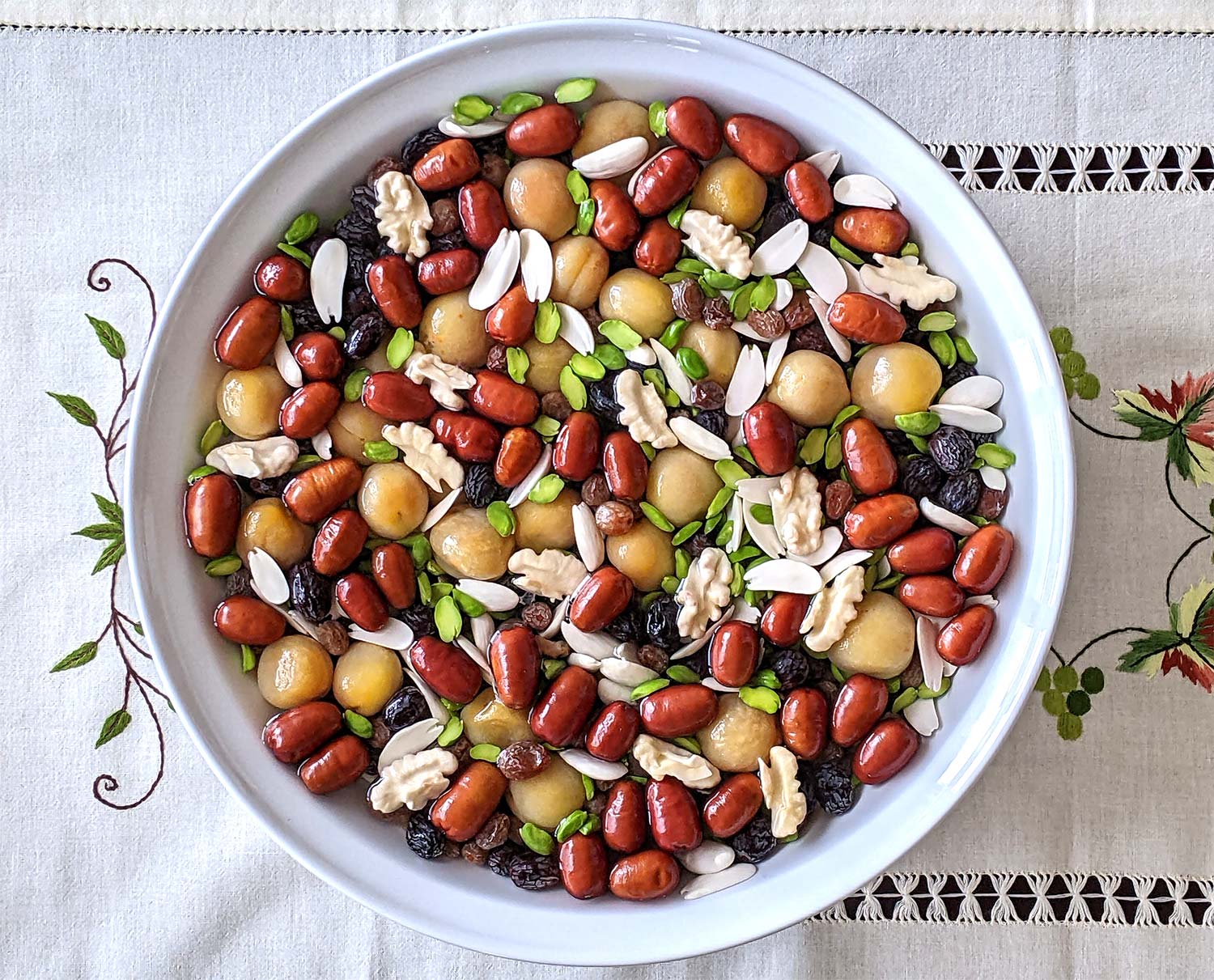
Afghanistan has a rich culinary culture, and there are many delicious dishes that are traditionally prepared during Nowruz. Here are some examples of traditional Afghan Nowruz dishes:
- Sabzi: Sabzi is a traditional Afghan dish made with spinach, cilantro, and other herbs. It is usually served as a side dish during Nowruz, and is often eaten with rice.
- Qabuli Palau: Qabuli Palau is a popular Afghan rice dish that is often served during special occasions, including Nowruz. It is made with basmati rice, lamb, carrots, raisins, and nuts, and is often garnished with chopped fresh herbs.
- Mantu: Mantu is a traditional Afghan dumpling that is usually stuffed with ground beef or lamb, onions, and spices. It is typically served with a tomato-based sauce and yogurt.
- Ashak: Ashak is a type of Afghan dumpling that is similar to Mantu, but is typically stuffed with scallions and herbs, and served with a tomato-based sauce and yogurt.
- Bolani: Bolani is a type of Afghan stuffed bread that is usually filled with potatoes, onions, and herbs. It is often served as an appetizer during Nowruz.
- Kebabs: Kebabs are a popular Afghan dish that are often served during Nowruz. They are typically made with marinated meat, such as lamb or chicken, and are grilled to perfection.
- Firnee: Firnee is a traditional Afghan dessert that is often served during Nowruz. It is made with milk, sugar, cardamom, and cornstarch, and is often topped with chopped pistachios or almonds.
Nowruz in Central Asia
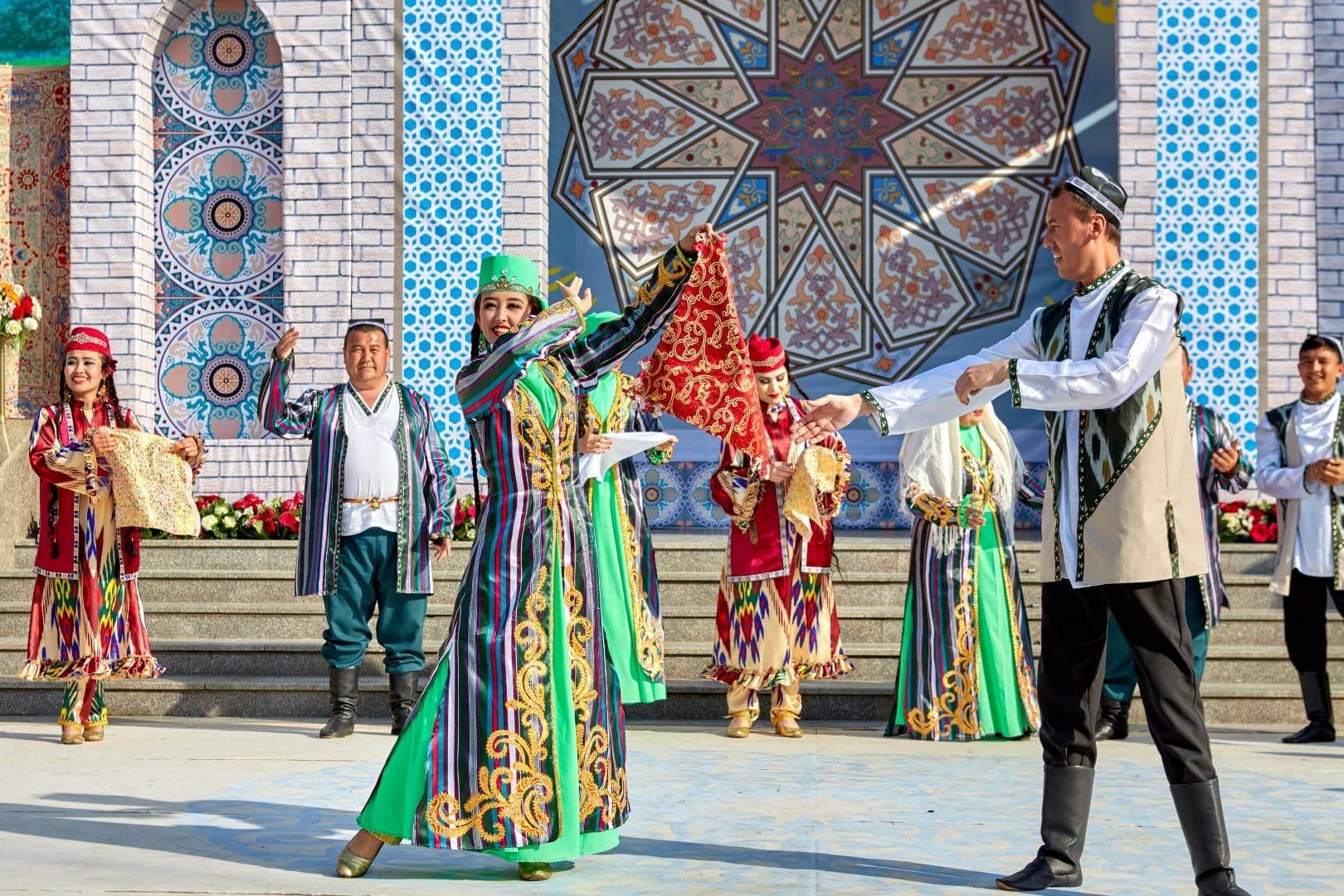
Nowruz is widely celebrated across Central Asia, and is an important holiday in countries such as Kazakhstan, Kyrgyzstan, Tajikistan, Turkmenistan, and Uzbekistan. While there are some variations in the way the holiday is celebrated in different countries, there are also many similarities in the customs and traditions associated with Nowruz in Central Asia. Here are some of the common features of Nowruz celebrations in Central Asia:
- Spring Cleaning: As in other countries, spring cleaning is an important part of preparing for Nowruz in Central Asia. People clean their homes, wash their carpets, and make repairs to ensure that everything is fresh and new for the holiday.
- Haft Sin: Haft Sin is a traditional table setting that is used during Nowruz in Central Asia. It includes seven items that begin with the Persian letter “sin,” which symbolizes the arrival of spring. The items usually include sabzeh (sprouts), samanu (sweet pudding), senjed (dried fruit), seer (garlic), serkeh (vinegar), somaq (sumac), and sekkeh (coins).
- New Clothes: Many people in Central Asia buy new clothes to wear on Nowruz, as a symbol of new beginnings and fresh starts. Women often wear bright and colorful dresses, while men wear traditional clothing, such as chapan or kaftan.
- Food and Drink: Food and drink play an important role in Nowruz celebrations in Central Asia. Traditional dishes may include pilaf, kebabs, soups, and salads. People also drink green tea, which is a symbol of hospitality.
- Festivities: Nowruz is a time for festivities and celebrations in Central Asia. People may attend concerts, festivals, and other cultural events, and children often receive gifts and sweets.
- Sports and Games: Sports and games are also a part of Nowruz celebrations in Central Asia. People may play traditional games such as buzkashi (a type of polo played with a goat carcass) or kokpar (a type of polo played with a goat or calf carcass).
Overview of participating countries (Uzbekistan, Tajikistan, Kazakhstan, etc.)
Nowruz is celebrated in many countries around the world, but it holds a special significance in several countries in Central Asia, including Uzbekistan, Tajikistan, Kazakhstan, Kyrgyzstan, and Turkmenistan. Here’s a brief overview of how Nowruz is celebrated in these countries:
Uzbekistan
Nowruz is celebrated in Uzbekistan as a public holiday, and people celebrate with traditional foods, games, and music. One of the main traditions in Uzbekistan is the making of sumalak, a sweet dish made from germinated wheat. This dish is prepared in large communal pots and requires hours of stirring over an open flame. People also decorate their homes with traditional carpets and textiles, and attend festive events and concerts.
Tajikistan
Nowruz is the most important holiday in Tajikistan, and is celebrated for several days. People celebrate with traditional dishes, such as sumanak (a sweet pudding made from germinated wheat), and halva (a sweet, dense confection made from flour and sugar). In addition to traditional foods, Nowruz in Tajikistan is also marked by the wearing of new clothes, the exchanging of gifts, and the hosting of festive gatherings.
Kazakhstan
Nowruz is also a public holiday in Kazakhstan, and people celebrate with traditional foods, music, and dance. One of the most important traditions in Kazakhstan is the making of Nauryz kozhe, a dish made from boiled meat, wheat, and milk. The dish is served to family and friends, and is said to symbolize friendship, unity, and prosperity. In addition to traditional foods, people in Kazakhstan also celebrate Nowruz with traditional games, such as kokpar (a type of polo played with a goat or calf carcass).
Kyrgyzstan
Nowruz is celebrated in Kyrgyzstan with traditional foods, such as beshbarmak (a dish made from boiled meat and noodles), and boorsok (a type of fried bread). People also decorate their homes with traditional textiles and carpets, and attend festive events and concerts.
Turkmenistan
Nowruz is celebrated in Turkmenistan with traditional foods, such as sumalak and halva, and people also celebrate by wearing traditional clothing, exchanging gifts, and attending festive events and concerts. One of the most important traditions in Turkmenistan is the lighting of the New Year’s fire, which symbolizes the warmth and light of the new year.
Unique elements of Nowruz celebrations in each country
Although Nowruz is celebrated across many countries, each country has its unique customs, traditions, and dishes that make the holiday special. Here are some unique elements of Nowruz celebrations in each country:
Iran
In Iran, the 13th day of the New Year is called “Sizdah Bedar,” which translates to “getting rid of the 13th.” It’s considered unlucky to stay indoors on this day, so people spend the day picnicking and enjoying nature with their family and friends. They also often throw the sabzeh, which is the sprouted wheat or lentil seeds grown for the haft-sin, into running water to symbolize letting go of the old year and welcoming the new.
Afghanistan
In Afghanistan, people celebrate by jumping over fires on the night before Nowruz. The fire is believed to be cleansing and purifying, and jumping over it is said to bring good luck and protect against evil spirits. People also decorate their homes with fresh flowers and buy new clothes for themselves and their families.
Uzbekistan: In Uzbekistan, people prepare a special dish called sumalak, which is made from germinated wheat. This dish is prepared in large communal pots and requires hours of stirring over an open flame. It’s considered a symbol of the collective spirit of the Uzbek people, as it takes many people working together to prepare it.
Tajikistan
In Tajikistan, people celebrate by preparing a dish called “seven sweets,” which is a platter of seven different sweet foods that are thought to represent the seven holy spirits of Zoroastrianism. The sweets often include nuts, dried fruits, and candies.
Kazakhstan
In Kazakhstan, people celebrate by playing traditional games, such as kokpar, a type of polo played with a goat or calf carcass. The game is played between two teams on horseback, and the goal is to carry the carcass across the opposing team’s goal line. It’s a physically demanding game and is considered an important part of Kazakh culture.
Kyrgyzstan
In Kyrgyzstan, people prepare a special dish called “osh paloo,” which is a pilaf made from meat, carrots, onions, and rice. It’s traditionally served with kazy, a type of smoked horse meat, and is considered a symbol of abundance and prosperity.
Turkmenistan
In Turkmenistan, people celebrate by lighting the New Year’s fire, which is a large bonfire that’s lit in public places. The fire symbolizes the warmth and light of the new year, and people often dance and sing around it.
Nowruz in Azerbaijan
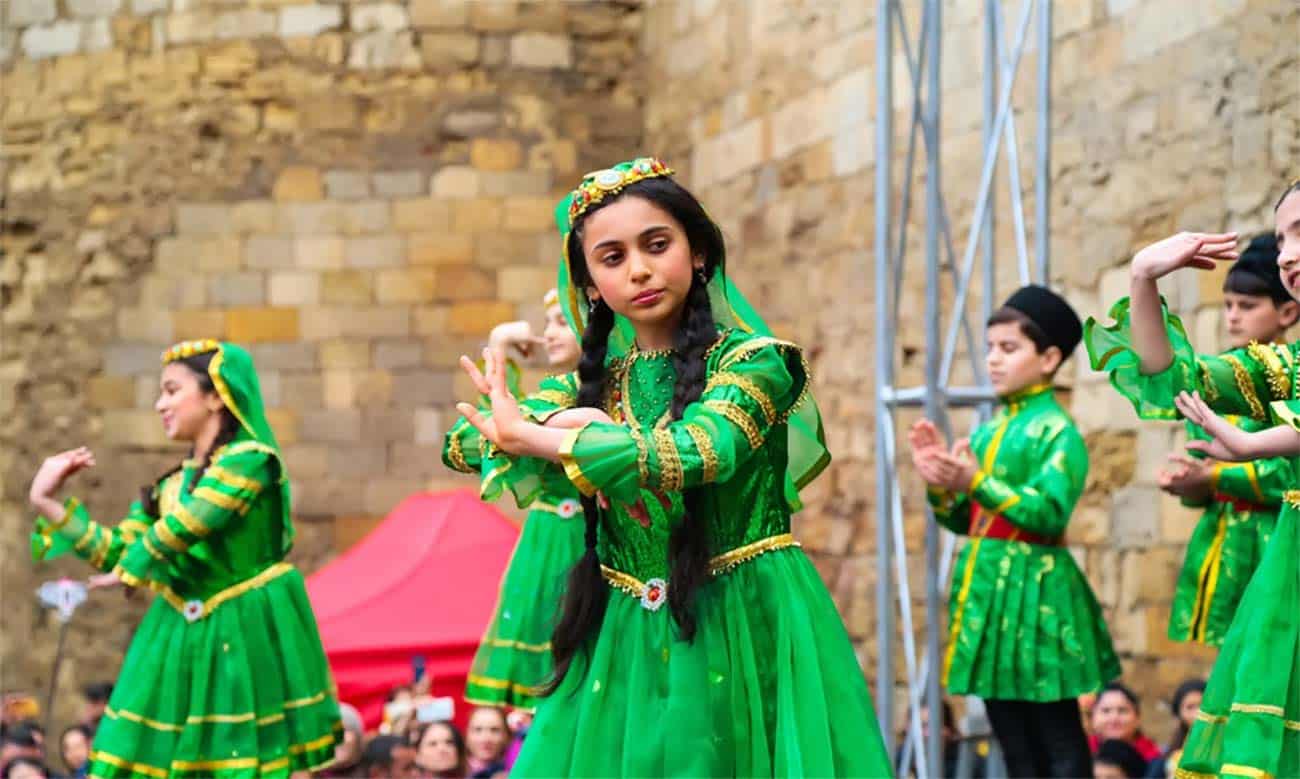
Nowruz is also an important holiday in Azerbaijan, where it’s celebrated as a spring festival and a symbol of the renewal of nature. In Azerbaijan, Nowruz is known as “Novruz Bayrami,” and it’s celebrated from March 20th to 21st, coinciding with the spring equinox.
One of the most important customs associated with Nowruz in Azerbaijan is the preparation of the “haft-sin” table, which includes seven items that start with the letter “S” in Azerbaijani. These items include samani (wheat sprouts), sumakh (dried sumac berries), serke (vinegar), sir (garlic), sabzi (herbs), senjed (dried fruit), and seb (apple). The table is also decorated with candles, flowers, and sweets.
On the night of Nowruz, people light bonfires and jump over them to ward off evil spirits and bad luck. They also visit friends and family and exchange gifts and sweets. In rural areas, people often celebrate by participating in traditional games and sports, such as wrestling and horse racing.
Another important tradition associated with Nowruz in Azerbaijan is the “khoncha” ceremony, where people gather around a table filled with sweets, nuts, and dried fruits. They take turns picking a piece of food from the table and making a wish for the new year. It’s believed that the wish will come true if the person’s chosen food is sweet.
Nowruz in India and Pakistan
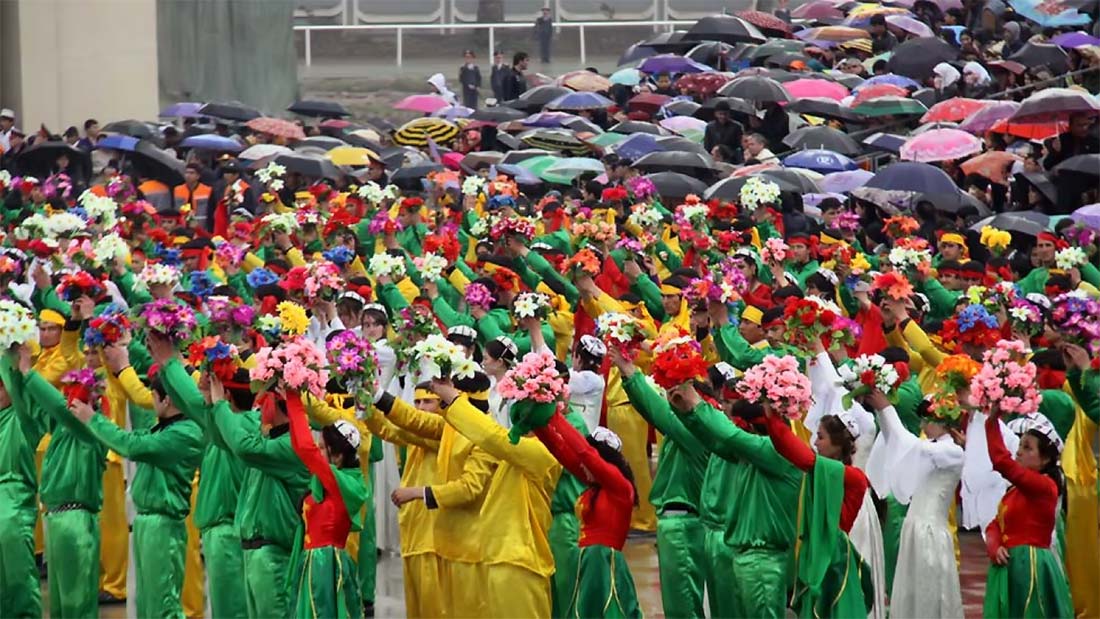
Nowruz, also known as Navroz, is celebrated by the Parsi and Shia Ismaili Muslim communities in India and Pakistan. Here is a brief overview of how Nowruz is celebrated in these countries:
Parsi community in India
The Parsi community in India, who are followers of Zoroastrianism, celebrate Nowruz as a new year’s day. The day is marked by cleaning their homes and decorating them with flowers, preparing special meals, and visiting family and friends. They also attend special prayers at the fire temple, which is considered a sacred symbol in Zoroastrianism.
Ismaili Muslim community in India and Pakistan
The Ismaili Muslim community in India and Pakistan also celebrate Nowruz as a new year’s day. The day is marked by attending special prayers at the mosque, preparing special meals, and exchanging gifts with family and friends. They also participate in cultural events and musical performances to celebrate the occasion.
In both countries, the celebrations are similar to those of other Nowruz-celebrating countries, with a focus on renewal, spring, and new beginnings. The day is also marked by the traditional haft-sin table, which is prepared with seven items that symbolize different qualities, such as garlic for good health, apples for beauty, and coins for wealth. Overall, Nowruz is an important and joyful occasion for the Parsi and Ismaili Muslim communities in India and Pakistan.
Nowruz in Other Countries

As a holiday that symbolizes renewal, hope, and new beginnings, Nowruz is a time to celebrate the diversity and contributions of Persian and Central Asian communities in the United States and around the world.
Since the 1980s, the White House has issued annual statements recognizing the importance of Nowruz and extending greetings to those who celebrate it. In recent years, the White House has also hosted Nowruz receptions, where government officials, diplomats, and community leaders come together to celebrate the holiday and honor its traditions and customs.
Nowruz is also celebrated in other countries and regions beyond those we have already discussed. Here are some of the countries where Nowruz is celebrated:
Albania
Nowruz, or “Nevruz” as it is known in Albania, is celebrated on March 14th and is considered a national holiday. The celebrations include large public events, such as concerts and dance performances, and the traditional preparation of the haft-sin table.
China
The Uyghur people, an ethnic minority group in China, celebrate Nowruz as a cultural and religious holiday. The celebrations include the preparation of traditional foods, such as fried dumplings and meat skewers, and the exchange of gifts and sweets.
Georgia
Nowruz, or “Norouzoba”, is celebrated in Georgia by the Azerbaijani and Kurdish communities. The celebrations include the traditional haft-sin table, as well as fireworks, music, and dancing.
Iraq
Nowruz is celebrated by the Kurdish population in Iraq, where it is known as “Newroz”. The celebrations include public events, such as music and dance performances, as well as the traditional lighting of bonfires.
Syria
Nowruz is celebrated by the Kurdish population in Syria, where it is also known as “Newroz”. The celebrations include public events, such as music and dance performances, and the traditional lighting of bonfires.
Turkmenistan
Nowruz, or “Nowruz Bayram”, is considered a national holiday in Turkmenistan and is celebrated with large public events, including traditional music and dance performances.
Read More




